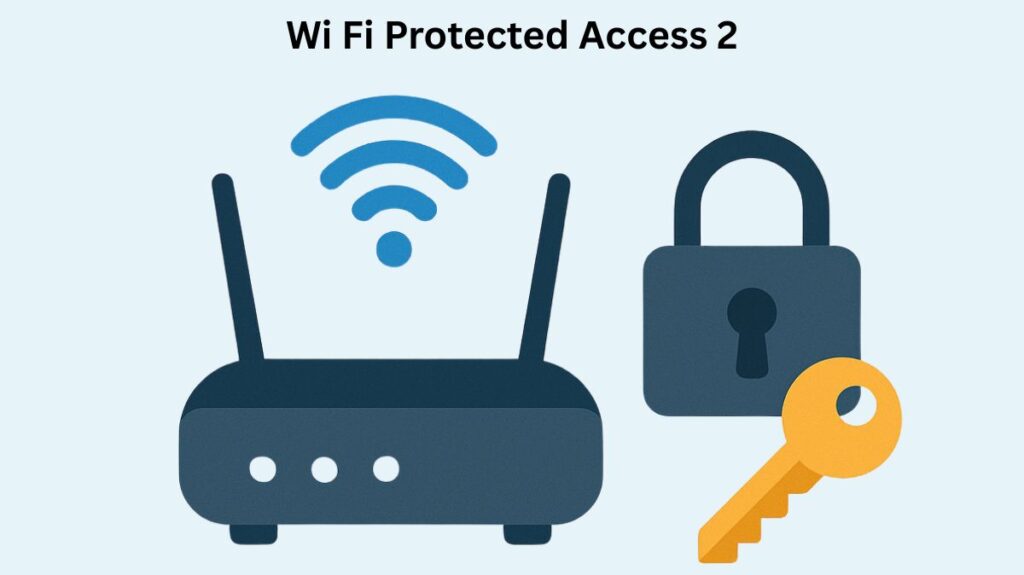Wi Fi Protected Access 2

A security standard and protocol called Wi-Fi Protected Access 2 (WPA2) was created to safeguard wireless networks, or Wi-Fi. It is the second generation of Wi-Fi Protected Access certifications and the final version of WPA that the Wi-Fi Alliance has approved.
With far better data protection and network access management, WPA2 was introduced in 2004 specifically to replace the old WPA standard and the extremely vulnerable WEP standard. For many years, it was the accepted industry standard for Wi-Fi security.
You can also read What is Wireless Security Protocols and Authentication Modes
Foundation and Requirement
Following its acceptance in 2004, the IEEE 802.11i amendment served as the sole foundation for WPA2. It incorporates every facet or required component of the approved 802.11i security standard.
Important details about its status:
- The Wi-Fi certification process requires it.
- It is compatible with WPA backwards.
- Almost every contemporary Wi-Fi gadget supports WPA2. If your devices do not support WPA3, this is the minimum security protocol that is advised.
How WPA2 Works
Strong, contemporary encryption standards are essential to WPA2’s better security features:
- Encryption Algorithm (AES): The Advanced Encryption Standard (AES) algorithm is the main encryption technique used by WPA2. AES is widely favoured and regarded as a very powerful and reliable encryption technique, offering a notable security enhancement over earlier iterations that employed TKIP.
- Encryption Protocol (CCMP): The Counter Cypher Mode with Block Chaining Message Authentication Code Protocol (CCMP) is the particular encryption and integrity protocol that is employed. CCMP ensures that data hasn’t been altered during transmission.
- CCMP consists of two algorithms: AES counter mode encryption and Cipher Block Chaining Message Authentication Code (CBC-MAC), which serves as the Message Integrity Check (MIC) are These two algorithms make up CCMP.
- Hardware Requirement: Client devices and Access Points (APs) must have hardware that supports CBC-MAC and AES counter mode in order to use CCMP efficiently. As a result, legacy devices that only support WEP or TKIP cannot use WPA2.
- Configuration Recommendation: WPA2 Policy-AES offers the maximum level of security and is advised to be used instead of WPA and TKIP, even though the standard definition of WPA2 calls for AES-CCMP or TKIP.
Authentication Modes
In order to accommodate various network settings, WPA2 offers two primary client authentication modes:
WPA2-Personal (PSK Mode)
- Intended Use: The product’s intended use is for small office or home networks (SOHO).
- Authentication Method: Users use a Pre-Shared Key (PSK), usually a single password or passphrase, to authenticate. Every client and access point needs to be configured with the same key string.
- Key Exchange: The PSK is never transmitted by air. Instead, encryption key material is generated and exchanged between clients and APs using the PSK through a four-way handshake process.
- Vulnerability: Dictionary attacks, in which a hacker records the four-way handshake and tries to guess the PSK offline, can be used against this mode.
- Configuration: A typical CCNA goal is to set up a WLAN using WPA2-PSK through the controller GUI. For a particular WPA2 WLAN, only one PSK represented by a single hex key or a single ASCII key can be set up.
WPA2-Enterprise (802.1X Mode)
- Intended Use: Made for larger organizations, businesses, institutions, and enterprise networks.
- Authentication Method: 802.1X/EAP (Extensible Authentication Protocol) must be used.
- Server Requirement: An external Remote Authentication Dial-In User Service (RADIUS) authentication server manages authentication.
- Security: Enterprise mode does not rely on a pre-shared key, in contrast to Personal mode. For increased security, it enables individual users to log in using distinct credentials and necessitates a certificate infrastructure for authentication.
- Complexity: Because authentication servers need to be set up and configured, deploying enterprise mode is more difficult.
Limitations and Successors
Although WPA2 offers stronger security than WEP and WPA, it does have limitations:
- A weak password (PSK) still leaves WPA2-Personal mode open to brute-force assaults.
- Flaws were revealed by vulnerabilities like the 2017 KRACK (Key Reinstallation Attack), which was later fixed.
- WPA3, which provides even more robust protection and a more straightforward secure setup process, is replacing WPA2. Notably, SAE (Simultaneous Authentication of Equals) takes the place of PSK in WPA3.
You can also read What Is OSPFv2 Open Shortest Path First Version 2 In Network
